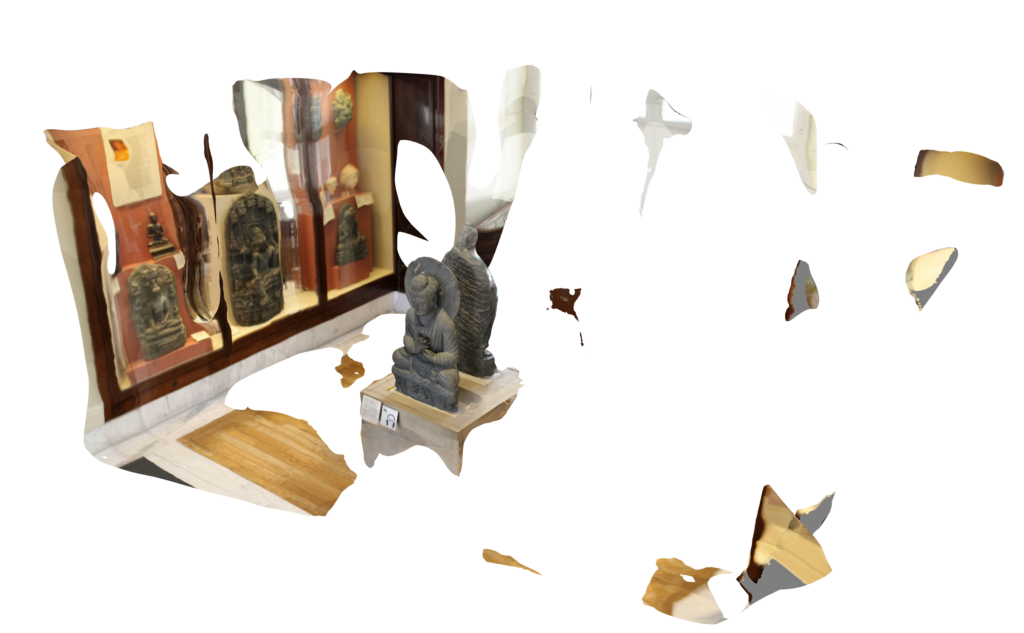-
Midterm: 3D Buddha Exhibit
The aim of this project was to go from a set of images of a Buddha sculpture from the British museum to a 3D model through photogrammetry. Autodesk’s Recap photo software makes the photogrammetry process relatively straightforward. I didn’t have to clean the data before putting it into Recap photo, but I did have to clean the output to get rid of parts of the model that didn’t weren’t the sculpture itself. The final result is a 3D model that can easily be viewed by anyone on the internet at any angle and more closely than in real life.
To go from the set of 46 images of the Buddha sculpture to a 3D model, the process is as simple as uploading the set of images into Recap photo and letting the model generate automatically.

The resulting model in Recap photo From there, the model had to be cleaned up a bit. The above photo demonstrates the power of the software, as it gleaned a lot of extra information about the room around the Buddha and modeled that as well. For this project though, I only wanted the Buddha sculpture, so I got rid of everything in the surrounding room and cut everything below the sculpture so that it was alone in the 3D space.
To present the object in an accessible and appealing way, I created a new subdomain for this midterm project and made it reminiscent of the home page of my website. I did this by keeping the same theme and using an “additional css” plugin to change the background color to match my home page. Embedding a 3D viewer in my new subdomain was a bit more challenging. I uploaded my model to Sketchfab, a freemium service for sharing 3D models online, then got an embed link from there that I could put in this webpage. This embed link is very versatile—it comes in html form, so it can be added to almost any website with ease.
Condensing a bunch of images into one model makes it much easier for viewers to view every aspect of the object without scrolling through a gallery of photos. On top of that, a gallery of photos has a boatload of duplicate information about the object. A 30 degree difference in perspective between a couple of pictures shows a lot of the same data to the viewer and only a tiny bit of new data. The process of photogrammetry makes a model that doesn’t display any duplicate information and enables the viewer to manipulate the object in 3D space rather than having to sift through many similar images. They can zoom and rotate around the object and view it from angles that they wouldn’t be able to if they were in a the museum, where they would only be able to walk around it. That model could also be included in a virtual 3D environment to help create a historical scene.
Photogrammetry makes historical objects much more accessible. Virtual museums are a viable way for students and people around the world to view historical objects without traveling at all. It is important that some historical context comes along with the model though. Viewing the model above in a 3D void doesn’t tell us much at all about the object and what it meant in history. For this reason, it’s important that in virtual museum exhibits there is historical context for each object so that viewers can think of the object in a time period, a place, a culture, and make sense of its significance.